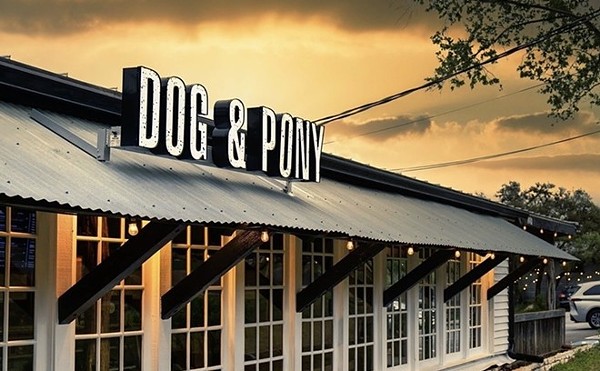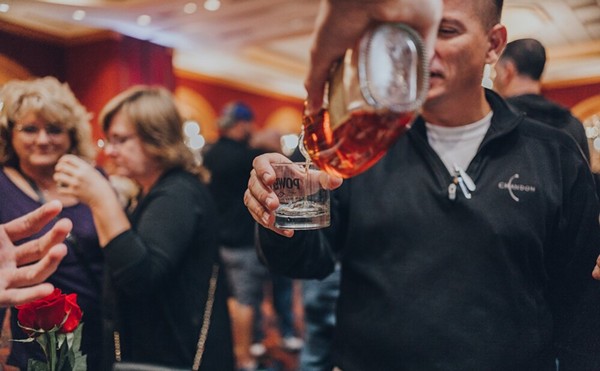I’ve always said that my love of bacon alone would prevent me from becoming a vegetarian, but after reading an exposé of the commercial pork industry in Rolling Stone about a year ago, I quit eating pork for a while. I’ve only resumed since discovering a reliable source of pork produced in a less evil manner — a find that took months of research (you the man, Amish butcher guy). Animals still die to provide me with food, but I don’t want their existence to consist merely of misery.
When I set about purchasing foie gras in preparation for this article, I was concerned that ducks would have to suffer. Surprisingly, it was easier to find humanely produced foie gras than similarly raised pork. Foie gras (pronounced “fwah grah”) is goose or duck liver that is much fattier than normal. It is perhaps the most finely and thoroughly marbled meat in existence and has an amazing sweet-savory, buttery flavor and velvety smooth texture.
To produce such a meat, the birds (almost always ducks) must be force-fed (usually corn) for a brief period (usually two weeks) just before slaughter. In fall, migratory birds overeat in the wild in preparation for long flights, and the liver is a major fat storage site. Ancient Egyptians first noticed that the flesh and livers of wild geese trapped during this stage were extra rich, and the eventual practice of force-feeding is depicted in art from as early as the third millennium B.C. Birds are amenable to force-feeding because they lack a gag reflex.
The practice of force-feeding has lately raised public condemnation, fueled in part by the now infamous YouTube videos. The clips, supposedly footage from Belgian and Canadian factories, show unhealthy birds in cramped cages being mechanically force-fed. The current trend of protesting restaurants serving foie gras and supporting legislation banning its sale has resulted. But after extensive inquiry, I’ve concluded that the quality of life of ducks raised in the U.S. for foie gras far exceeds that of commercial livestock.
Anthony Bourdain’s Travel Channel TV show No Reservations recently visited Hudson Valley Foie Gras, the largest domestic producer, where ducks were seen in open-air pens, free to move about and socialize. They also showed the force-feeding process. The ducks are held in place between the legs of a seated worker. A funnel is inserted into the bird’s mouth and down its throat, a distance of perhaps four inches, and about half a cup of grain is poured in. Some quick physiological notes: The esophagus of ducks and geese is expandable and lined with durable tissue, and, unlike in humans, an enlarged liver is not indicative of disease. The liver stores fat to be used later as energy. In any case, the force-feeding lasts about five seconds per bird. And the ducks don’t look freaked out during the process.
Last year, Central Texas Animal Defense held two protests outside Damien Watel’s Bistro Vatel (“We sell double the foie gras every time they come,” Watel defiantly told the Current), and phoned several other local restaurants to grill them about foie gras on their menus. Le Rêve’s Andrew Weissman, whom CTAD also targeted in its campaign, noted that Hudson Valley uses the entire bird, even the feathers, and added, “A little information is a dangerous thing.” Central Market carries foie gras from California’s Sonoma Foie Gras, although it doesn’t always have it in stock (Chicago Tribune staff reporter Mark Caro logged a Sonoma report similar to Bourdain’s Hudson Valley visit in 2006).
Foie gras production for the entire country in 2003 was 340 tons. Maryland alone produces twice as much chicken every single day. And commercial chickens don’t share the level of freedom foie-gras ducks enjoy. They’re raised in stacks of small cages and often have most of their beaks cut off to prevent pecking. Yet protests rarely occur at the many restaurants that serve commercial poultry, or at the actual factories.
Foie gras comes in three grades based on appearance, shape, and firmness. “A” indicates unblemished, round, and supple livers, while “B” designates livers that are smaller and softer (“C” is not available retail). Whole livers weigh around 1.5 pounds. I went with B, as I couldn’t see a difference in quality and it was half the price ($29/pound). This is actually a steal. The last time I had it at a restaurant, my tiny portion — which I generously estimate was two ounces — cost $15, or $120/pound.
Cooking foie gras at home is actually very easy, if you stick to two basic preparations: sauté and torchon. The only prep work is deveining. The liver itself is a pale umber color, smooth with a satiny surface. It’s quite firm but somewhat brittle, so handle it as gingerly as possible. There are two major lobes, which, if you carefully separate them, reveal veins and connective tissue. To remove this, cut around the connective tissue with a sharp paring knife, then grasp it with a paper towel for better grip, and pull gently. There should be just a couple more pockets of veiny stuff to remove, and in the end you should be left with one large intact lobe and a couple of smaller pieces.
To sauté, cut the liver into slices more than 3/4-inch thick — any thinner and you risk overcooking. Salt both sides and fry in a nonstick pan for about 15 seconds per side. The goal is to induce browning while minimizing the fat that’s rendered out, and it may take a few tries to get a feel for it. The result is an incredibly tender morsel that sort of evaporates into creaminess in your mouth. The taste is mild, lightly buttery, not quite meaty, but definitely savory. And while it is very rich, it finishes strangely clean. If it’s rubbery or mealy, it has been overcooked. Save the rendered fat for future use — say, to flavor mashed potatoes. To counterpoint the richness, make a quick sauce by simmering pomegranate juice with some sugar, reducing until syrupy.
Torchon (French for “cloth”) is more involved. This method makes good use of any smaller, broken pieces. Traditionally, the foie gras is marinated in cognac, white wine, and salt. I used bourbon instead of cognac, which works fine as long as it’s not too smoky (Bulleit is good). Marinate for 20 minutes, then remove to a clean dishcloth — I ended up using an unworn white tee, cut up. Save the marinade. Wrap the cloth around the foie gras and gently but firmly press and shape into a tight cylinder (rolling in a thin magazine works well), until you have a solid log. Pull the cloth tight and secure the ends — twine or even twist ties work. In a wide pan, simmer very gently in a mixture of chicken stock, the reserved marinade, and flavoring agents; I used thyme, bay leaf, and garlic. Roll the torchon around to ensure even cooking. After 15 minutes, remove from heat. When it is cool enough to touch, reshape it if necessary and refrigerate until firm. The finished product is equivalent to the most exquisite pâté you’ve ever had. It’s perfectly smooth, subtly flavored, and again rich but with a clean finish. One of my tasters compared the texture to a perfectly ripe avocado.
A whole foie gras provides many servings — my 1.3-pound liver was good for about 40 hors d’oeuvre-sized portions — and will set you back $40 minimum. It’s pretty bad for you, so it’s definitely special-occasion food. As far as I’m concerned, those are the only drawbacks. In fact, a diet consisting solely of foie gras impinges far less on the well-being of animals than the diet of an average American omnivore. Best meat ever. •
Elaine Wolff contributed additional reporting to this story.

















